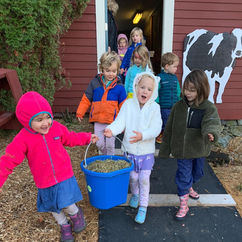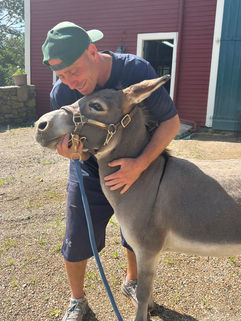ANIMALS AT AO
Why Animals?
Children learn indoors and outdoors through play-based experiences and hands-on exploration. As they play, children develop crucial cognitive, verbal, social, and emotional skills. They make discoveries, build knowledge, experiment with literacy and math, and learn to self-regulate and interact with others in appropriate ways. We use our outdoor environment extensively for their learning and for the development of the whole child. The wild animals (geese, ducks, hawks, rabbits, deer, turtles etc.) and our domestic animals (chickens, a miniature horse, a donkey, and goats) along with the growing and harvesting of crops, play a large role in our teaching. Our teachers are able to expand upon the children’s natural curiosity with the excitement of “teachable moments,” always plentiful in such a unique farm environment.
Animal Curriculum
While taking care of the environment and our animals, the children spend a great deal of time outdoors noticing the world around them. Rather than just saying, “Hi” to our animals and giving them a pat, we aim to build the children’s interest in and involvement with the animals living here on the farm. As part of our Animal Curriculum, teachers choose one animal a month to explore in more depth. Providing insight into the life of the animal and opening up avenues for further exploration, after brainstorming to see how much they know about the animal, teachers build on the children’s natural curiosity by introducing facts like where the animal lives, what it eats, and how it moves. Do they know turkeys sleep in the trees, that our goats have four stomachs, or that there is a difference between a mini horse and a pony?
If a class is studying the ducks, they will have the opportunity to go to the pond and observe the ducks in their natural habitat. Teachers will use a variety of open-ended questions to spark curiosity and open the children’s eyes to noticing what goes into that habitat. As they observe the ducks swimming, teachers may ask, "What shape do you think a duck’s foot is?” and then help the children express their thoughts and think about why. Also, as the ducks dip under the water, many questions arise: “Why do they do that, how long can they hold their breath, what do they find under the water, etc.” Through this process, the children gain knowledge in a practical, hands-on manner, as well as simple scientific skills about asking questions to attain answers. They also gain a respect for their environment. The children explore adventure sites on the property such as The Pine Woods, China Fields, Salamander Rock, and the Elephant Trees.














